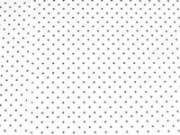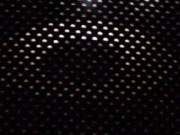The Screen
If you go to a theater to see a movie, chances are it will be projected onto a screen. A movie screen is usually made of heavy white vinyl and is categorized by the amount of light it reflects.

There are four main categories:
Advertisement
- Matte white: < 5 percent reflectivity, black is very dark gray to black and the image is not very bright
- Pearlescent: 15 percent reflectivity, black is dark gray and image is bright, provides best overall contrast
- Silver: 30 percent reflectivity, black is medium gray and image is very bright, dark colors can seem a little dull
- Glass bead: 40 percent or more reflectivity, black is light gray and image is usually too bright, normally used only under special circumstances
Pearlescent is probably the most common choice for a typical movie theater. To make a pearlescent or silver screen, a reflective coating is added to the matte white vinyl. A glass bead screen actually has thousands of tiny glass marbles embedded in a transparent coating on the surface of the screen.
Movie screens are designed not only to present a great picture, but also to support the theater sound system. Most movie screens have tiny perforations in them so the audience will be able to hear speakers placed behind the screen. In a typical theater, you'll find three speakers behind the screen, located at the far left, center and far right. This makes the sound seem more realistic, particularly when someone is talking. The audio is delivered through the appropriate speaker so that a sound seems to come from the person or thing talking or making noise. This makes for a more immersing movie experience.
In addition to the amount of reflectivity, a theater owner has to choose the curve of the screen. The three choices are:
- Flat screen
- Horizontal-curve screen
- Torex screen
A flat screen is just that, a screen with no curve at all. Horizontal-curve screens curve toward the audience slightly at each end. This curving is to avoid the pincushion effect, particularly in auditoriums with a short distance from the projector to the screen. Pincushioning describes the distortion of the image on the screen by the changes in distance of the light from the projector. On a flat screen, light from the projector travels a shorter distance to reach the middle of the screen than it does to reach the edge of the screen. Since the size of the projected image is determined by the distance to the screen, this makes the image appear slightly larger towards each end. The diagram below demonstrates this concept:


By curving the ends of the screen towards the projector, the distance traveled by the light can be equalized. Torex screens take this idea to the next step. Not only do they curve in at each end, they also curve in at the top and bottom of the screen creating a concave surface. On a torex screen, light from the projector should hit all parts of the screen at the same time.
